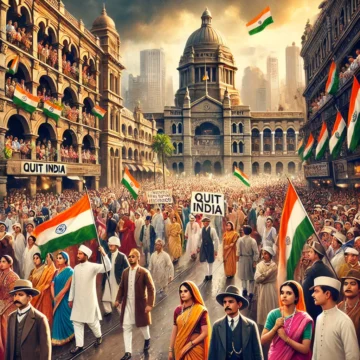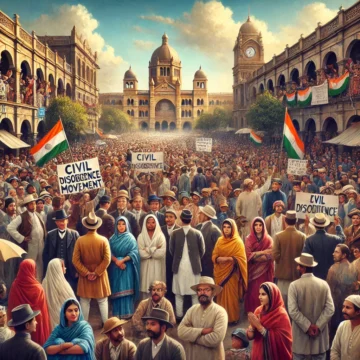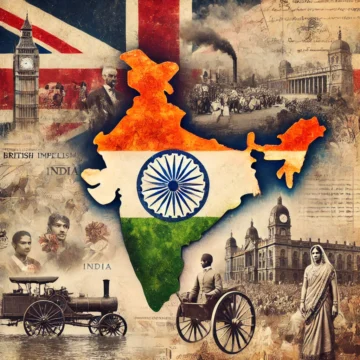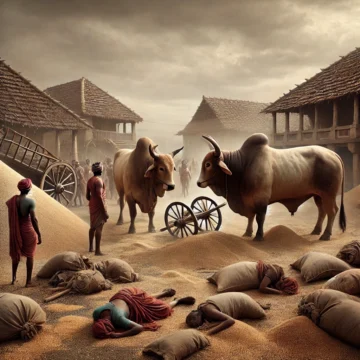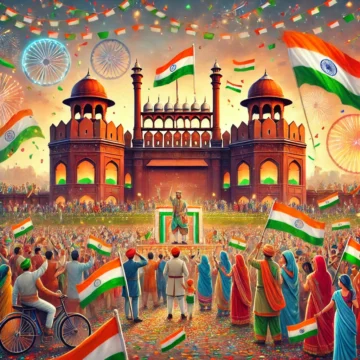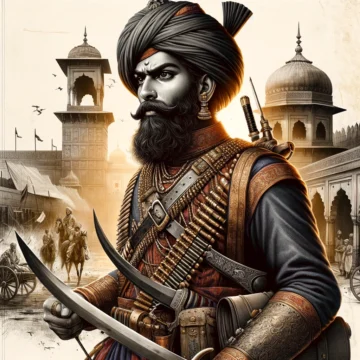The riots in Kohat of 1924 and the 1989 exodus of Kashmiri Pandits share a legacy of communal violence under differing political regimes. This blog explores the catalysts, impacts, and enduring lessons of these events, shedding light on the complexities of Hindu-Muslim relations in India's fraught historical landscape.
Tag: British colonial rule
Mahatma Gandhi and His Principles Analyzed
Exploring Mahatma Gandhi's complex legacy, this blog dives into his reinterpretation of non-violence, political use of religious symbols, and strategies during the Indian independence movement. It critically examines how Gandhi's actions sometimes contradicted his ideals, particularly in his approaches to Hindu-Muslim unity and economic self-reliance, offering a nuanced perspective on his enduring impact.
World War 2 in Bharat: The Battle Against Japanese Forces K
During World War II, India, still under British rule, faced the looming threat of Japanese invasion. This fear catalyzed a series of political and military responses that not only shaped wartime strategies but also invigorated India's push for independence. The blog explores the profound impact of these events on India’s geopolitical landscape and its path to sovereignty.
India’s Freedom Struggle Efforts and Quit India Movement-III
In this detailed analysis, we explore the Quit India Movement of 1942—a pivotal uprising in India's fight for independence. Initiated by Gandhi amidst World War II pressures, this movement marked a drastic shift from previous resistance strategies, ushering a more direct confrontation against British rule and catalyzing a nationwide push for sovereignty.
India’s Freedom Struggle and Quit India Movement-II
Dive into the pivotal Civil Disobedience Movement of the 1930s in our comprehensive analysis. This segment examines the strategic shifts and public uprisings that challenged British colonial policies under Gandhi's controversial leadership, setting the stage for a more intensified push towards Indian independence.
British Rule in India: A Blessing or a Curse?
Exploring the dual impacts of British rule in India, this blog navigates through the economic, social, and political changes from 1757 to 1947, culminating in a detailed discussion of the Partition's enduring consequences on India's fabric.
World War I and Devastation of Bharat II K
World War I left an indelible mark on Bharat, shaping its future struggle for independence. From the massive human and economic contributions to the psychological trauma endured by returning soldiers, the war accelerated nationalist movements and exposed the contradictions of British colonial rule. The aftermath of the war saw the rise of mass mobilizations and the eventual decolonization of Bharat.
World War I and Devastation of Bharat I K
World War I profoundly impacted Bharat, catalyzing a political awakening and fueling nationalist sentiment. The war's socio-economic strains exacerbated tensions, leading to widespread unrest and laying the groundwork for future resistance movements. Leaders like Mahatma Gandhi, initially supportive of the British war effort, shifted toward advocating for direct action against colonial rule, setting the stage for Bharat’s independence.
Caste Systems and Definition of Brahmin Analyzed
To understand the evolution of Brahmin identity within Hindu Caste Systems, we explore key scriptures and historical shifts. Initially, the caste system emphasized qualities and professions over hereditary status. However, British colonial rule introduced rigid caste classifications, transforming fluid social categories into fixed ones. This blog examines the lasting impact of these changes and the contemporary relevance of Brahmin qualities.
India Independence Day Decided Seven Seas Away
Each August 15th, India bursts into celebrations for India Independence Day, marking its liberation from British rule. This blog delves into the Indian Independence Act of 1947, exploring the political strategies and pivotal decisions that sculpted this momentous day, unveiling the layers of struggle and triumph that defined the era.
Nana Saheb: A Crucial Figure in 1857 Rebellion
Nana Saheb, born Dhondu Pant on May 19, 1824, was a pivotal leader in the Indian Rebellion of 1857. Raised in Bithur near Kanpur, he opposed British policies, particularly the Doctrine of Lapse, which denied him his pension and estate. His leadership included the capture and siege of Kanpur and alliances with Tatya Tope and Rani Lakshmi Bai. Despite Kanpur's fall and his retreat to Nepal, Nana Saheb remains a symbol of resistance against British rule. His legacy is commemorated through cultural references, memorials, and educational curricula in contemporary India.





